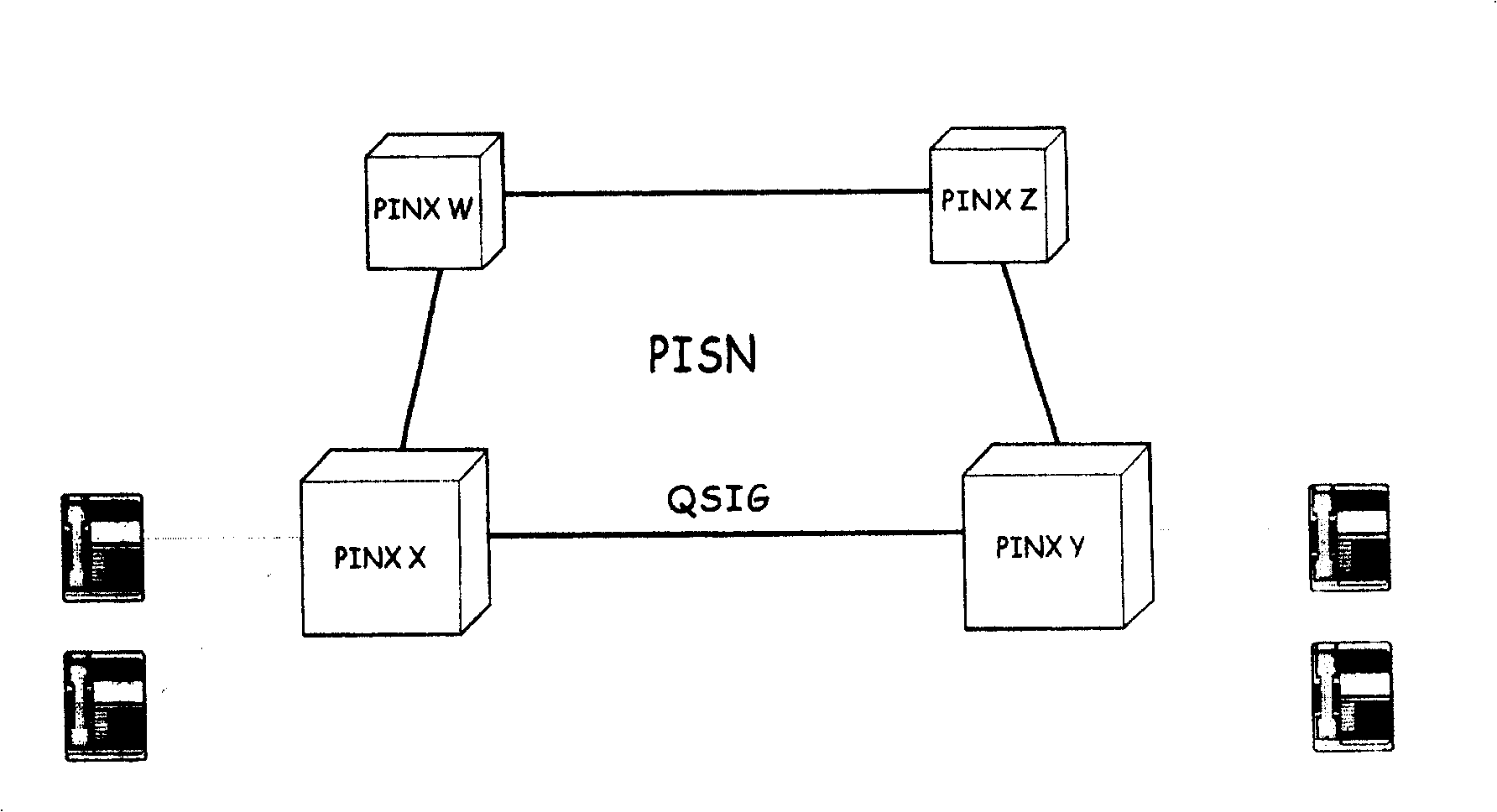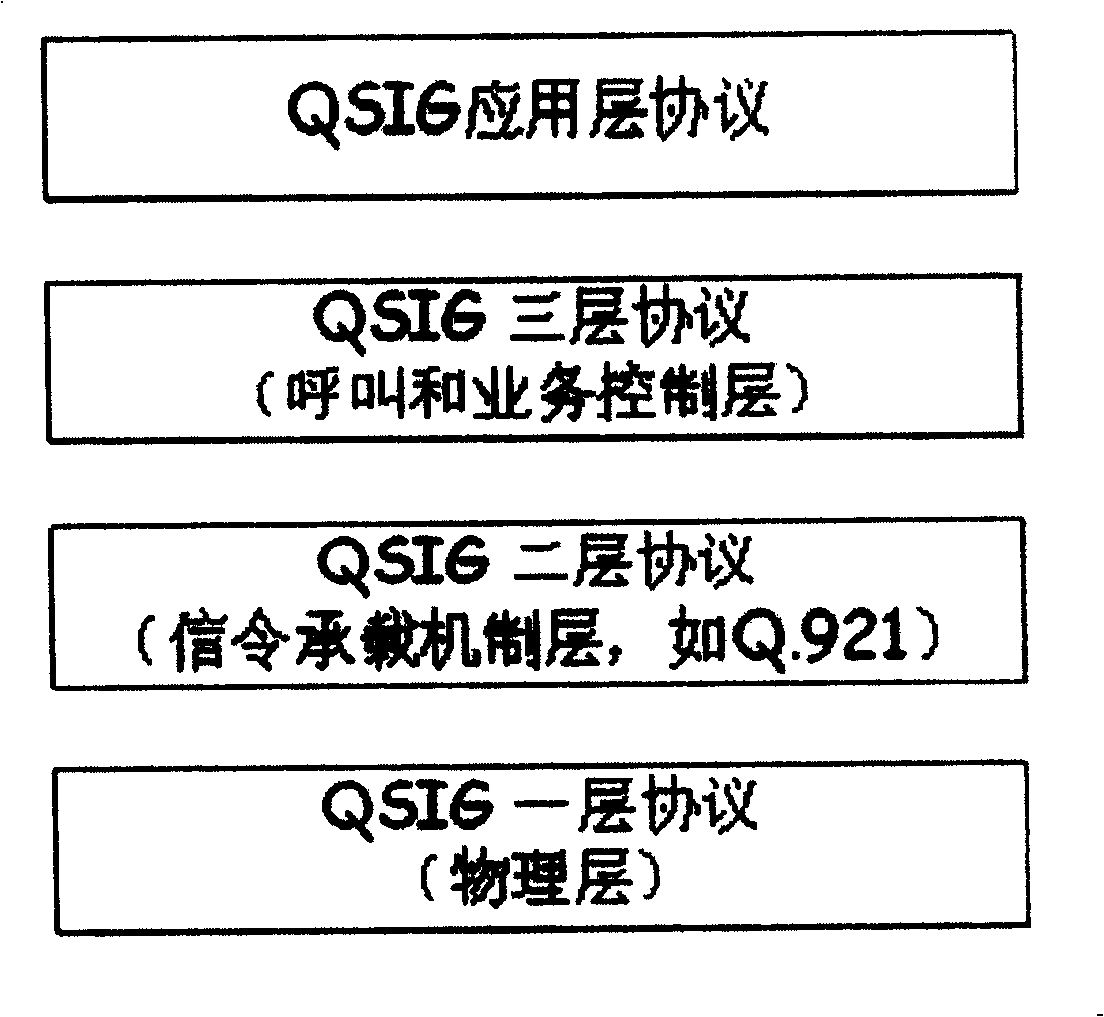Method for channel allocation in QSIG system
A channel allocation and information channel technology, applied in the transmission system, data exchange through path configuration, electrical components, etc., can solve the problem that the B channel can no longer be used, and achieve the effect of ensuring effective and full utilization and improving flexibility
- Summary
- Abstract
- Description
- Claims
- Application Information
AI Technical Summary
Problems solved by technology
Method used
Image
Examples
Embodiment 1
[0033] Embodiment one: if Figure 5 As shown, a channel allocation process in a QSIG system includes the following steps:
[0034] 1) The calling party selects the information channel B1 expected by the calling party from all available information channels connecting the calling party and the called party, and sends a connection establishment request to the called party through the signaling channel, and the request includes the calling party The number information of the B1 information channel expected by the calling party, wherein the signaling channel is to select a specific channel in the information channel group according to the needs, and in this example it is assumed that the signaling channel D1 is selected.
[0035] 2) The called party receives the information and determines the information channel expected by the called party. The specific steps are: judge whether the selected B1 information channel is available, and if available, use the information channel B1 expe...
Embodiment 2
[0037] Embodiment two: if Figure 6 As shown, the difference from Embodiment 1 is that in step 2), it is judged that the selected B1 information channel is unavailable, and if the B1 information channel is occupied or damaged, then step 4) is performed:
[0038] 4) Select an available information channel B2 from the information channels connected to the calling party as the desired information channel of the called party. And the number of the selected B2 information channel is carried in the response returned by the called party to the calling party. If the calling party agrees, the information channel B2 will be used as the information channel for the communication between the calling party and the called party. If the calling party does not agree, the call will be released directly and the call will be terminated.
[0039] According to the above-mentioned embodiment, it can be known that the call signaling message is transmitted on D1. If the B1 channel has been occupied o...
Embodiment 3
[0040] Embodiment three, such as Figure 7 As shown, a channel allocation process in a QSIG system includes the following steps:
[0041] 31) The calling party selects the information channel B2 expected by the calling party from all available information channels connecting the calling party and the called party, and sends a connection establishment request to the called party through the signaling channel D1, and the request includes The number information of the B2 information channel expected by the calling party.
[0042] 32) The called party receives the information and determines the information channel expected by the called party. The specific steps are: judge whether the selected B2 information channel is available, and if available, use the information channel B2 expected by the calling party as the information channel expected by the called party. The information channel expected by the calling party, the called party returns a response to the calling party, and c...
PUM
 Login to View More
Login to View More Abstract
Description
Claims
Application Information
 Login to View More
Login to View More - R&D
- Intellectual Property
- Life Sciences
- Materials
- Tech Scout
- Unparalleled Data Quality
- Higher Quality Content
- 60% Fewer Hallucinations
Browse by: Latest US Patents, China's latest patents, Technical Efficacy Thesaurus, Application Domain, Technology Topic, Popular Technical Reports.
© 2025 PatSnap. All rights reserved.Legal|Privacy policy|Modern Slavery Act Transparency Statement|Sitemap|About US| Contact US: help@patsnap.com



